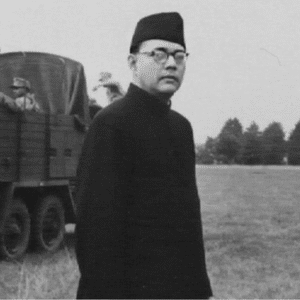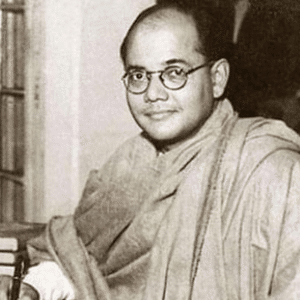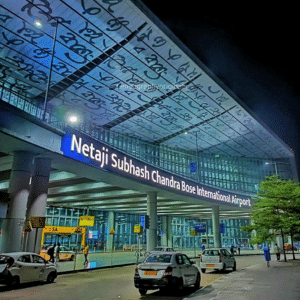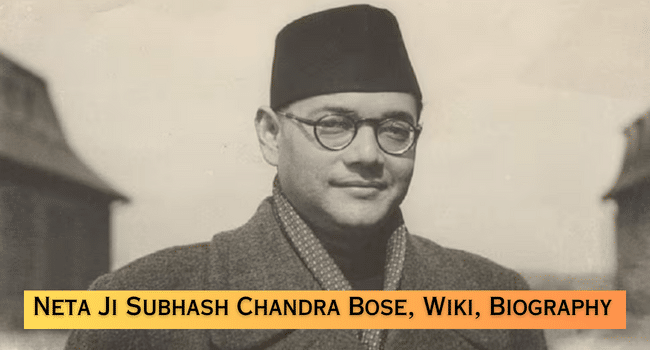Table of Contents
Biography
The well-known figure and the Indian’s inspiration Subhash Chandra Bose was born on 23th January 1897. The names of Subhas Chandra Bose’s parents were Janakinath Bose and Prabhavati Dutt Bose.
Subhash Chandra Bose, the preeminent freedom fighter, was distinguished by his remarkable leadership abilities and magnetic oratory skills. Among his iconic slogans were “Delhi Chalo,” “Tum mujhe khoon do,Main tumhe azadi dunga” (March to Delhi, Give me blood, and I will give you freedom). He founded the Azad Hind Fauj, making significant and multifaceted contributions to India’s struggle for independence.
Subhash Chandra Bose Photo

Stay Connected with KulFiy
Wiki
| Full Name | Subhas Chandra Bose |
| Born (Date of Birth) | 23rd January 1897 |
| Age | 48 years (died) |
| Birthplace | Cuttack, Orissa |
| Died | 18th August 1945 |
| Gender | Male |
| Zodiac Sign | Aquarius |
| Hometown | Cuttack, Orissa |
| School | the Protestant European School |
| College | Presidency College |
| Profession | Youth educator and commandant |
| Nationality | Indian |
| Religion | Hindu |
| Father | Janakinath Bose |
| Mother | Prabhavati Dutt Bose |
| Siblings | Sarat Chandra Bose |
| Spouse | Emilie Schenkl |
| Children’s | one |
| Daughter | Anita Bose Pfaff |
Birthday
Netaji Subhas Chandra Bose was born in Cuttack, Orissa on 23rd January 1897 to Prabhavati Dutt Bose and Janakinath Bose.
| Netaji Subhash Chandra Bose Birthday | January 23, 1897 |
Jayanti
| Netaji Subhash Chandra Bose Jayanti | January 23rd |
Died
On August 18, 1945, Subhash Chandra Bose met his tragic end in a plane crash while en route to Tokyo from Taiwan. This fateful incident marked the reported demise of Netaji, as his plane crashed over Taipeh, Taiwan.
| Netaji Subhash Chandra Bose Died | August 18, 1945 |
Family
Netaji Subhash Chandra Bose Family
| Subhash Chandra Bose Father | Janakinath Bose |
| Subhash Chandra Bose Mother | Prabhavati Devi |
| Siblings | 6 sisters and 7 brothers |
| Subhash Chandra Bose Wife | Emily Schenkl |
| Children’s | 1 |
| Son | |
| Subhash Chandra Bose Daughter | Anita Bose Pfaff |
Marital Status
Emily was hailing from a modest background, completed her schooling, and led a relatively ordinary life. Her deep-seated passion for writing and reading that initially drew him to her. Bose, engrossed in literary pursuits at the time, recognized her skills as an asset to his work, and their professional collaboration gradually evolved into a profound love.
In 1937, they clandestinely tied the knot by Hindu traditions, keeping their marriage an exceptionally well-guarded secret, with no attendance from close relatives or friends. Remarkably, their union remained undocumented. Following Bose’s return to India after his Indian Civil Service tenure, Emily chose not to accompany him and remained abroad. Their rendezvous occurred when Bose traveled to Germany, where they continued their relationship. In 1942, they welcomed a baby girl into their lives, affectionately named Anita Bose Pfaff.
Education
Subhash Chandra Bose received his early education at the Protestant European School in Cuttack, which today is recognized as Stewart High School. His journey of learning continued as he pursued his undergraduate studies at Presidency College.
| School | the Protestant European School |
| University | Presidency College |
Political Career
Subhash Chandra Bose’s journey with the Indian National Congress is marked by his involvement in the Non-Cooperation Movement, initially founded by Mahatma Gandhi, which evolved into a powerful non-violent force. Subsequently, he dedicated himself to the Bengal Congress as a youth organizer and volunteer commander while also establishing the influential newspaper “Swaraj.” After getting released from prison in 1927, the leader assumed the role of general secretary within the Congress party. After joining the Congress party he came in touch with Jawaharlal Nehru in the pursuit of India’s independence.
Interestingly, while incarcerated, he even assumed the role of Mayor of Calcutta. Subsequently, his journey was marked by a series of arrests and releases on suspicion of ties to revolutionary organizations. Ultimately, his release came on medical grounds.
In 1938, upon his election as the President of the Indian National Congress, Subhash Chandra Bose took significant steps by establishing a national planning committee and advocating for an ambitious industrialization program.
In 1941, Netaji Subhash Chandra Bose managed to escape from his house arrest in India, going to great lengths to conceal his identity. These soldiers, under his leadership, constituted the Indian Legion, amassing a force of approximately 4,500 strong.
In 1942, the Indian Legion, along with the representatives of the Special Bureau for India in Berlin, bestowed the title of “Netaji” upon Bose during his time in Germany. Faced with challenges and setbacks in Germany, Subhash Chandra Bose made the pivotal decision to depart for Japan in 1943.
Within the Indian nationalist movement, the Japanese government was not initially regarded as a natural ally. It was observed as a source of sympathy for the nations that had endured the brunt of Japan’s military expansion. However, Netaji Subhash Chandra Bose held a different perspective.
He believed that British rule in India could be challenged through a collaboration between the Japanese-backed Azad Hind Fauj and a domestic uprising. The Azad Hind Fauj, renowned for its “Delhi Chalo” slogan and salute, served as a wellspring of inspiration for Indians both within and beyond the country’s borders.
Subhash Chandra Bose Jayanti observed annually on January 23rd, serves as a significant tribute to commemorate his remarkable contributions to the nation. This date marks the birth of Netaji in Cuttack, Odisha. Officially designated as ‘Parakram Diwas,’ the day is a celebration of courage and valor, virtues exemplified by Subhash Chandra Bose throughout his life.
It was just last year when India’s Prime Minister unveiled a majestic statue of Netaji at Kartavya Path, underscoring the nation’s recognition of his legacy. On Netaji Subhash Chandra Bose Jayanti, schools, educators, government officials, and politicians, transcending party affiliations, come together to pay their respects to this iconic figure.
Early Life
Subhash Chandra Bose Early Life: Subhash Chandra Bose was born to Prabhavati Dutt and Janakinath Bose on 23rd January 1897. in the city of Cuttack, located in Orissa. His father Janakinath Bose held the honorary title of “Rai Bahadur.” He was also a prominent lawyer who had a well-reputation in Cuttack. Like his siblings, Subhas Chandra Bose Went to European school to get early education in Cuttack. The school is presently known as Stewart High School. When he was pursuing undergraduate at Presidency college, he started his journey.
Subhas Chandra was encouraged by the writings of Swami Vivekananda and the teachings of Ramakrishna when he was just 16 years old. His parents admitted him to the University of Cambridge for preparing Indian civil service. In 1920, he successfully passed the civil service examination. However, in April 1921, upon learning of the escalating nationalist fervor and turmoil in India, he decided to resign from his civil service candidacy and swiftly returned to his homeland.
House
| Subhash Chandra Bose House | Cuttack, Orissa |
Photos
Subhash Chandra Bose Photos
Netaji Subhash Chandra Bose

Netaji Subhash Chandra International Airport

Netaji Subhash Chandra Bose International Airport was established in the beginning of 1900s which is a stopover on the air route in Kolkata.
FAQ
How subhas chandra bose died?
Netaji is an iconic figure in India’s quest for freedom who was tragically declared dead in an aviation accident.
Who is subhas chandra bose?
Subhas Chandra Bose was a youth educator and commandant.
When did Subhas Chandra Bose die?
just a few days later of Japan’s surrender, an iconic figure Subhas Chandra Bose in India’s quest for freedom, was died in an aviation accident.
Read more on KulFiy
Elon Musk Net Worth
Mark Zuckerberg Net Worth
Daisy Keech Net Worth
Kylie Jenner Net Worth
